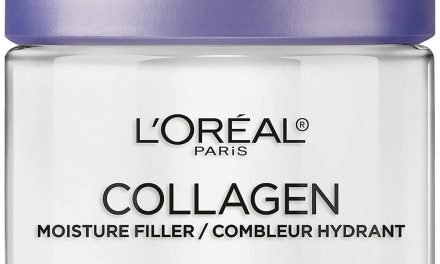
Sally was noticing changes in her 73-year-old mother in-law Emily. As Sally became Emily’s primary caregiver, she noticed Emily seemed a great deal anxious most of the time. She’d also become more withdrawn.
And, because Sally often ran errands for Emily, after a few trips to the pharmacy she noticed her mother-in-law had prescriptions for Percocet from several different doctors. When she herself asked about it, Emily’s answers were vague and almost secretive.
Sally got her husband Tom involved and when he continued to press the matter with his mother, Emily became quite confrontational. Finally, the whole story came spilling out. With tears streaming down her face, Emily shared she had acquired tolerance to her pain medication. So she just started taking more of it than prescribed – upping the amount little by little.
Emily kept it a secret, fearing her doctor would cancel the prescription if she told him what she was doing. She was acting out in fear – fear of not being able to function without the pills and fear of asking her family for help.
Eventually, Emily began visiting several different doctors, asking for the same pain medication, and filling the prescription at different pharmacies to remain undetected. Through the practice of “doctor shopping” Emily had become addicted to Percocet.
“Just what the doctor had ordered” for her pain following surgery, had become “just what several doctors unknowingly ordered.”
Doctor’s Mistake or Pop Culture Norm?
The first wave of opioid misuse increase in the U.S. came in 1991, following the 80s culture that accepted recreational use of legal pill-based forms of drugs. “They may not be prescribed to me, but these pills must be safe to take since they were prescribed to someone.”
This was also a time period when opioids first began being widely used to treat pain for cancer patients. Marijuana was being used to treat pain and nausea as well, but it was still illegal everywhere. By 1999, these heroin-based opioid drugs were being prescribed regularly for non-cancer pain.
In 2013, their use was so prevalent the U.S. Center for Disease Control and Prevention (CDC) issued comprehensive guidelines for prescribing opioids for chronic pain outside of cancer treatment, palliative care, and end-of-life care.
These attempts to regulate opioid prescriptions to only those that are necessary have been thwarted, mostly by the pharmaceutical industry acting behind the scenes through lobbying and under the cover of advocacy groups.
Yet, the true solution to any addiction problem comes down to the individual. We must start empowering people by educating them on the dangers of opioid drugs – with more than just a too fast too wordy blurb at the end of a TV commercial. And, we must empower and support those who got addicted by “accident” like the estimated 11% of seniors who have a prescription drug use disorder.
From Celebrity Disorder to Anyone’s Disorder
“Even when I took drugs, I realized it just wasn’t fun anymore. The drugs had become part of my routine. Something to wake me up. Something to help me sleep. Something to calm my nerves. There was a time when I was able to wake up, have fun without a pill to help me function. These days felt like I might have a nervous breakdown if I didn’t have them.”
These were not 73-year-old Emily’s words, but words written in the 1989 book Neon Angels by girl band star Cherie Currie of the Runaways. Written by Currie as a 25-year-old, those words could have easily belonged to a modern day, 63-year-old Currie had she not gotten help.
An interventionist in the recovery industry herself, Currie knows full well that these could be the words of anyone’s grandma or mom in 2021.
The Accidental Addict
Not just “tripping” as in the past, Baby Boomers don’t look like your stereotypical opioid or other controlled substance addict.
“We didn’t start our taking prescription medication to feel good, we were prescribed it so we wouldn’t feel bad.”
Unlike the younger Currie who took pills to get high, most older adults with a prescription drug abuse disorder get there by accident. Think about it – older adults take more medicine than other age groups. According to the National Institute on Drug Abuse, 50% of people between the ages of 57 and 85 take more than 5 medications or supplements daily. This increases the risk for mistakes and drug abuse.
Limiting Narcotics Can Limit Pain in the Long Run
Prescription drugs widely vary in their purposes and side effects. Medication, however, is not the only form of treatment for pain, and we must, as an age group, start insisting our medical providers treat us as a whole person.
By treating our whole person, our doctors should be referring us to alternative therapies that encompass all kinds of disciplines. Treating the mind and body together is called Mind Body Therapy (MBT).
This complimentary use of alternative treatments and cognitive therapy has been shown to reduce associated health and social problems in addiction recovery efforts over medication-only treatments for pain.
Some of these disciplines include acupuncture, breathwork, sensory integrations like sound baths, muscle strength training, biofeedback therapy, stress management, chiropractic treatments, yoga (including chair yoga), aromatherapy, relaxation exercises, herbal remedies, gentle massage, and many others.
Participating in Mind Body Therapy Can Reduce Your Opioid Use
A recent paper published in The Journal of The American Medical Association reviewed the use of MBTs as a tool in addressing the opioid crisis. Researchers found that MBTs did have a moderate association with reduction in pain intensity and statistically significant reduction of opioid use and misuse. As found in most recovery journeys, MBTs also were shown to reduce the cravings for opioids in patients surveyed.
Where to Find Help
There is help for women who have a prescription drug addiction, including free 12-step programs like the meetings and program offered by Narcotics Anonymous.
For those needing more help, such as a residential or outpatient program for addiction to prescription medication or other substances, gender specific programs like those found at New Directions for Women (NDFW) in Costa Mesa, CA can really help.
NDFW offers all kinds of alternative therapies to help not only the physical addiction, but the pains of life that often contribute to it. It helps a woman overcome past traumas that are contributing to her physical and emotional pain.
What do you know about prescription drug addiction? Have you had personal experience with any particular medication? What was it prescribed for? Why did you (or someone you know) develop an addiction? Has anything been done toward recovery? What has helped the most?





